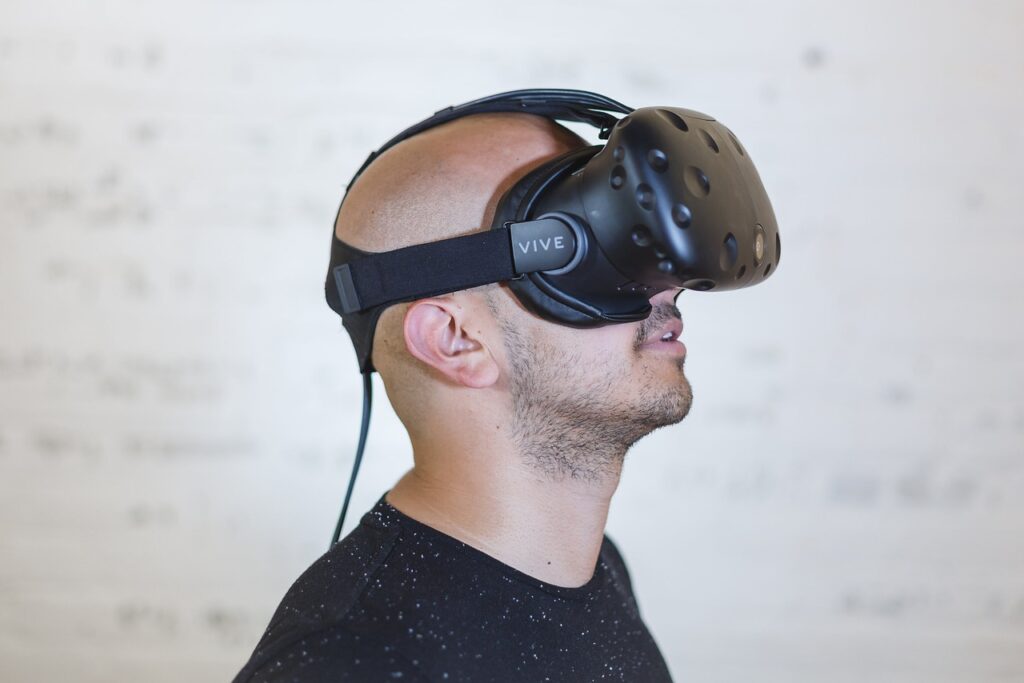Occupational Therapy (OT) is a dynamic field that empowers individuals to participate in the activities of everyday life despite challenges and disabilities. The recent surge in technology and innovation has significantly impacted OT, introducing tools and resources that make therapeutic interventions more effective and engaging. In this post, we highlight the top 10 innovative tools used in OT, which showcase the growing intersection between healthcare and technology.
1. Virtual Reality (VR) Systems

Virtual Reality systems are revolutionizing OT by simulating real-life scenarios where patients can practice and enhance their skills in a safe, controlled environment. VR systems help in treating conditions such as PTSD, autism, stroke recovery, and more, making therapy engaging and measurable.
2. 3D Printing
3D printing technology in OT is used to create customized adaptive equipment, orthotics, and prosthetics. This allows for personalized care that meets the unique needs of each client, improving their accessibility and participation in daily tasks.
3. Smart Home Technologies
Smart home devices are assisting OT patients by making their living environments more accessible. From voice-activated systems to automated lighting and security, these technologies help individuals gain independence in their daily routines.
4. Interactive Metronome®
The Interactive Metronome® is a tool designed to improve cognitive, communicative, and motor skills through rhythm and timing exercises. It has shown significant results in improving attention, coordination, and timing among individuals with neurological conditions.
5. Tablet and Smartphone Apps
There is an abundance of apps designed specifically for Occupational Therapy use. These apps cover a wide range of functionalities, from fine motor skill development to cognitive rehabilitation, offering portable and accessible therapy options.
6. Telehealth and Remote OT Services
The rise of telehealth has expanded the reach of OT services, allowing practitioners to consult and engage with patients remotely. This has been especially crucial during times when face-to-face sessions are not possible, ensuring continuity of care.
7. Sensory Integration Tools

Innovative sensory tools, such as weighted blankets, sensory swings, and tactile toys, have become integral in OT for children and adults with sensory processing disorders. These tools help in regulating sensory input and improving focus and behavioral responses.
8. Biofeedback and Neurofeedback Devices
These devices measure physiological functions such as heart rate and brain waves, providing real-time feedback to users. In OT, biofeedback and neurofeedback are used for stress management, emotional regulation, and enhancing concentration.
9. Robotics and Assistive Devices
Robotic assists and wearable technologies are on the rise in OT, aiding in the rehabilitation of limb movements, enhancing strength, and promoting independence in individuals with mobility limitations.
10. Gaming Consoles and Exergames
Gaming systems that require physical movement can serve as therapeutic tools in OT. They encourage active participation, improve motor skills, and are especially engaging for pediatric OT, making therapy fun and interactive.
Conclusion
The field of Occupational Therapy is at an exciting crossroads with technology, bringing forth innovative tools that offer new possibilities for therapy and rehabilitation. These top 10 innovative tools used in OT represent just the tip of the iceberg in how technology can improve the lives of those facing daily challenges. By incorporating these tools, OT practitioners are better equipped to deliver personalized, effective care, ensuring that their patients can achieve greater independence and quality of life. Along with ethical considerations and proper training, these tools have the potential to transform the field of OT for years to come. It is essential that Occupational Therapists stay updated on new technology and continue to explore its potential in improving therapeutic interventions. With constant innovation and collaboration between healthcare and technology, the future of Occupational Therapy looks brighter than ever before.
Interested in becoming an OT?
Interested in how to become an Occupational Therapist? Explore our resources below to get started:
What is OT?
Discover the fundamentals of Occupational Therapy and understand what it entails. Read More
Become an Occupational Therapist
Learn the steps and requirements to embark on a fulfilling career as an Occupational Therapist. Read More
Types of Occupational Therapy
Explore the various specializations within Occupational Therapy and find your area of interest. Read More
For those keen on delving deeper into Occupational Therapy (OT), we have compiled a list of essential reading material to broaden your knowledge. Whether you’re considering a career in OT, seeking to understand different types of occupational therapy, or just curious about the field’s history and methodologies, these resources provide comprehensive insights:
Explore OT Insider Articles:
Beating Workplace Burnout: Practical Tips for a Balanced Work Life: Gain insights into practical strategies to manage and overcome workplace burnout. Read more
Unlocking Potential: 7 Benefits of Occupational Therapy: Discover the key benefits that occupational therapy offers for unlocking individual potential. Read more.
Understanding the Unique Roles of Occupational and Physical Therapy: Discover the distinct functions and contributions of OT and PT in rehabilitation. Read more.
The Vital Contribution of OTAs to Rehab: Get to know how Occupational Therapy Assistants play a crucial role in the rehabilitation process. Read more.
Tracing the Origins: A Journey through Occupational Therapy’s Past: Take a historical tour of OT’s evolution and its significance over the years. Read more.
Concurrent Therapy vs. Group Therapy: A Comparison: Learn about the differences, benefits, and applications of concurrent and group therapies in OT. Read more.
References:
- American Occupational Therapy Association. (n.d.). Virtual reality: A new tool to enhance occupational therapy practice [Fact sheet]. https://www.aota.org/-/media/Corporate/Files/AboutOT/Evidence/Virtual-Reality-Fact-Sheet.pdf
- American Occupational Therapy Association. (n.d.). Sensory integration and processing disorders. https://www.aota.org/About-Occupational-Therapy/Patients-Clients/ChildrenAndYouth/Sensory.aspx
- Cermak, S. A., & Larkin, D. (2002). The role of adaptive and assistive technology in promoting occupation and participation. American Journal of Occupational Therapy, 56(6), 676–679.
- Orrell, A., & McKee, M. (2015). Occupational therapy and telehealth: Past, present, and future. Australian Occupational Therapy Journal, 62(3), 155-158.
- Sveistrup, H. (2004). Motor rehabilitation using virtual reality. Journal of NeuroEngineering and Rehabilitation, 1(10), 1-8.
- Tabak, N., & Ristvedt, S. (2018). Occupational therapy’s role in the 3D printing revolution. American Journal of Occupational Therapy, 72(1), 7201410040p1-7201410040p6.
- Tabloski, P. A., & Valentine, D. (2011). Interactive Metronome®: Effects on communication behaviors in head-injured adults. Therapeutic Recreational Journal, 45(1), 27-39.
- Vroman, K., Arthanat, S., & Lysack, C. (2015). “Who over 65 is online?” Older adults’ dispositions toward information communication technology. Computers in Human Behavior, 43, 156-166.
- Wiener, J. M., & DiMaggio, C. (2006). Use and perceptions of unmet needs among assistive technology and home modifications for community-dwelling elderly persons. The Gerontologist, 46(3), 339–348.
- Yigit-Kupeli, B. (2020). Using technology to enhance occupational therapy practice in schools: A scoping review. British Journal of Occupational Therapy, 83(2), 65–75.
